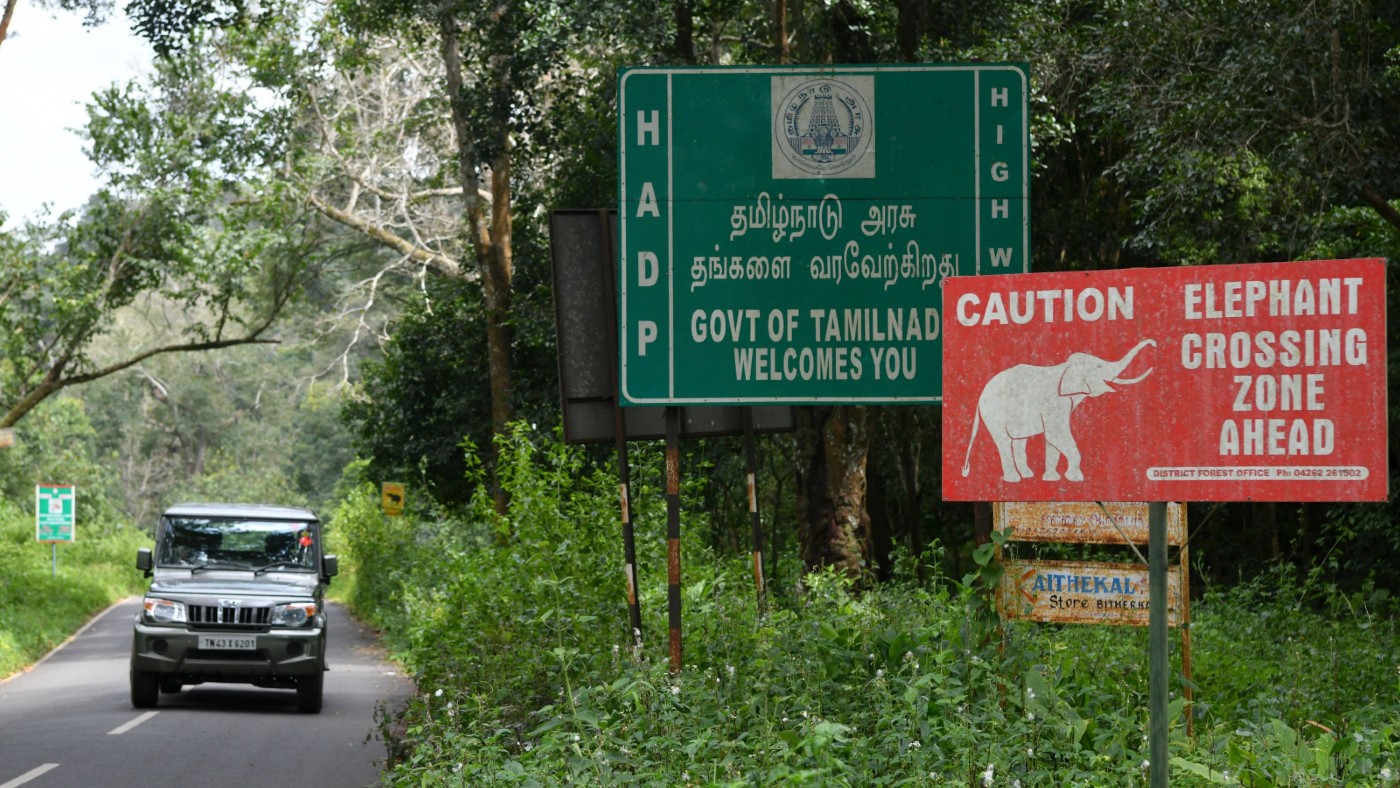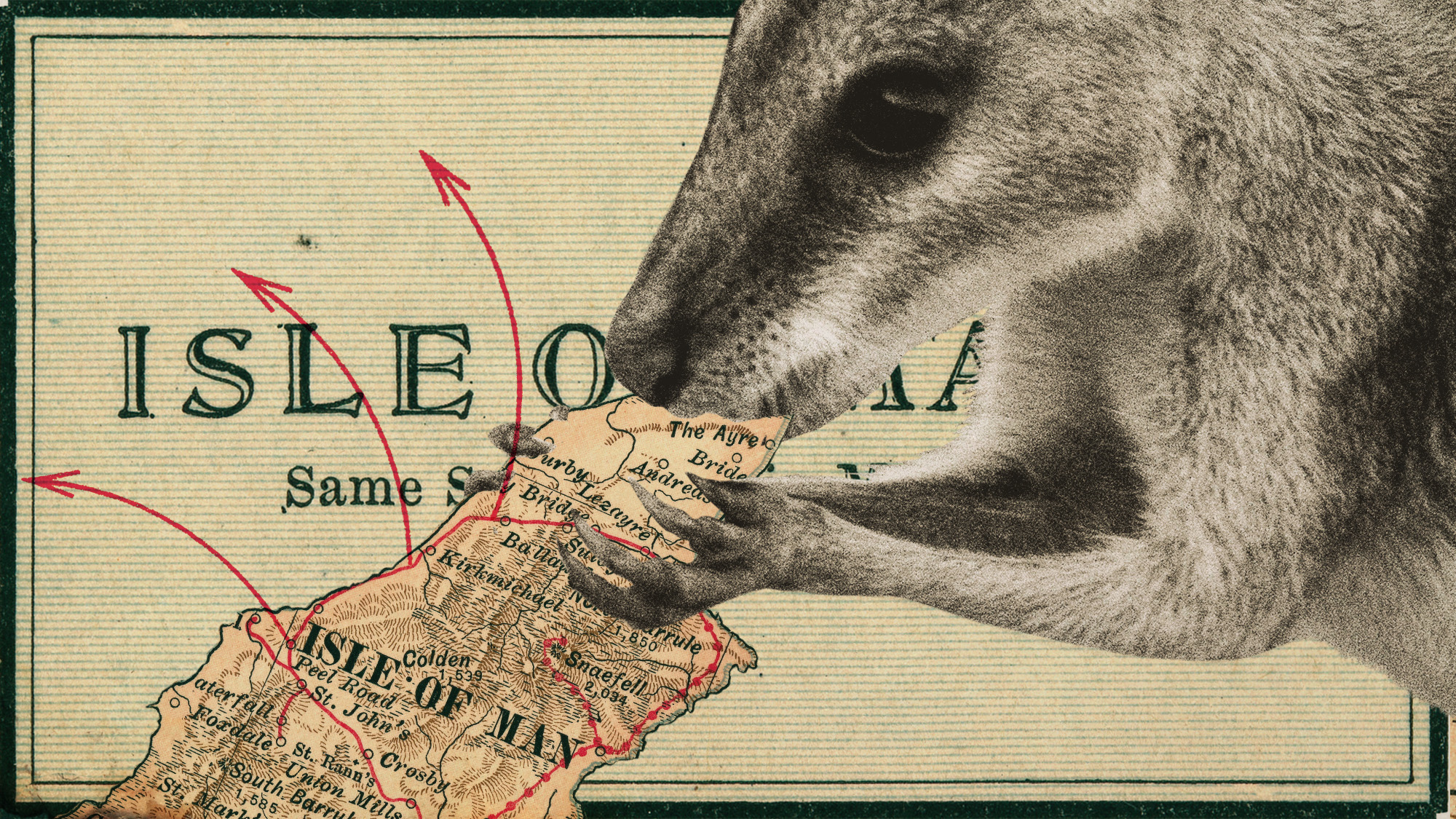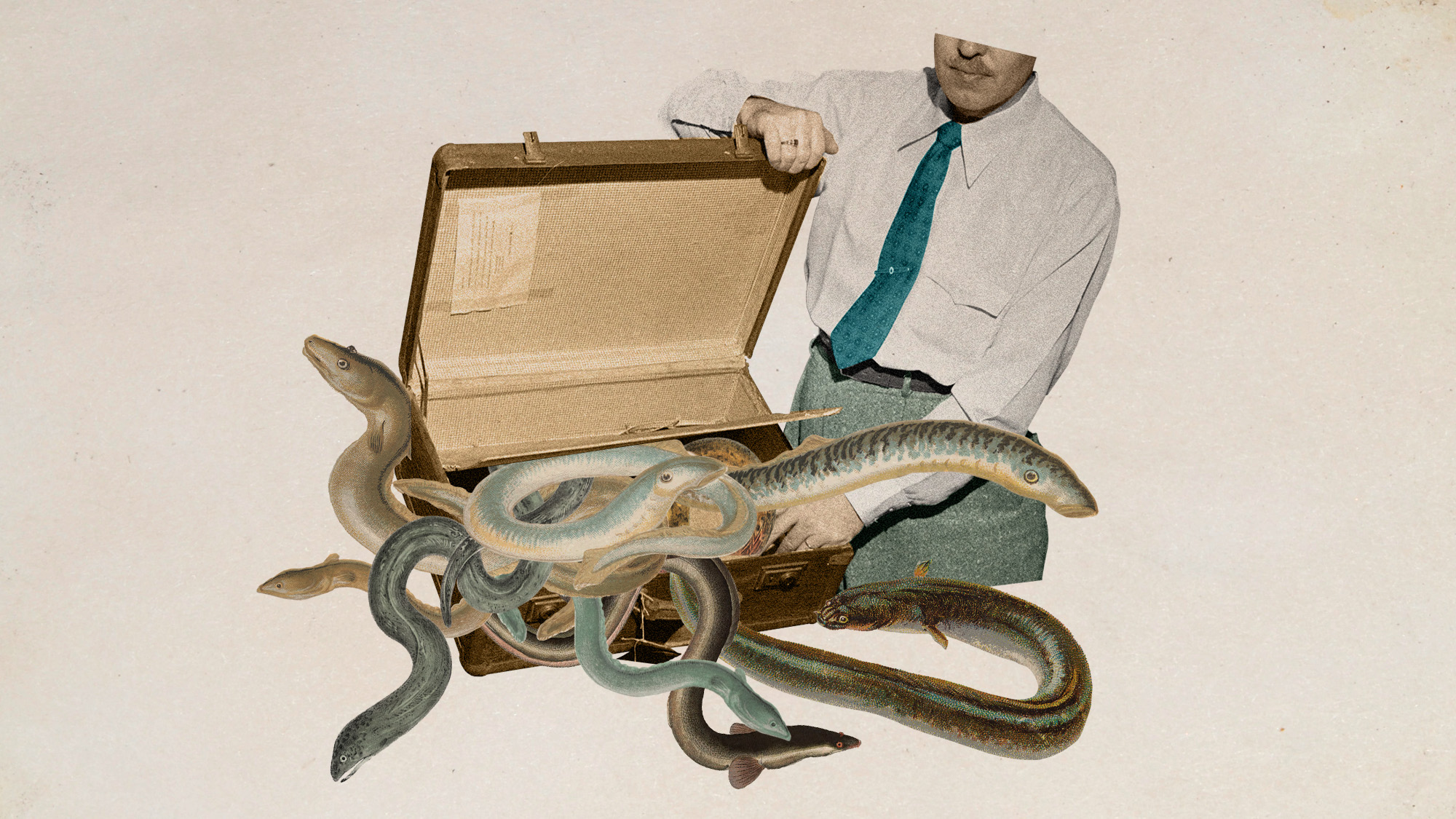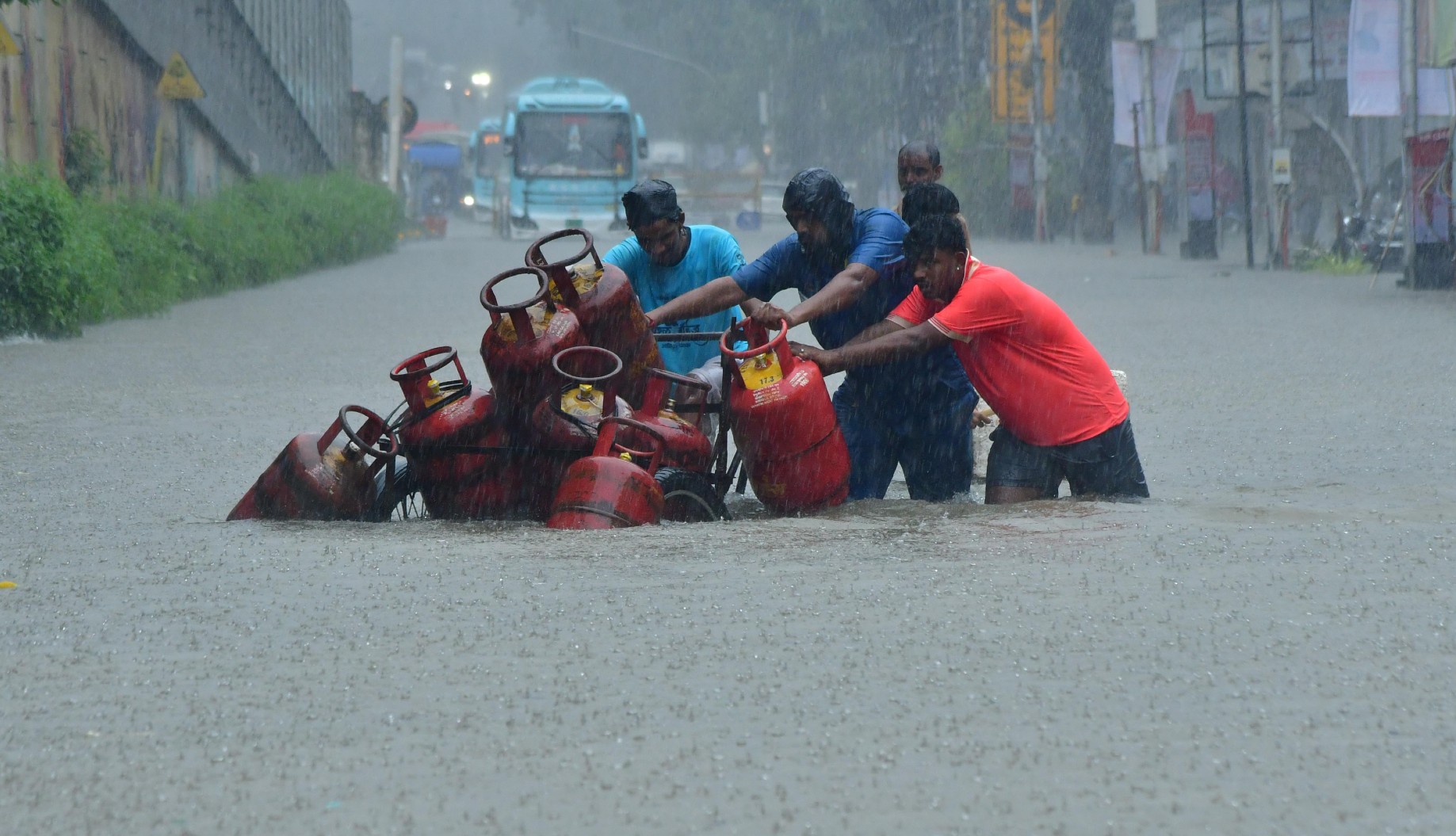Why animal-human conflict is on the rise in India
Report says coexistence with wild animals in India is ‘reaching the threshold of tolerance’

Last week, an elephant trampled a woman to death in Mayurbhanj, eastern India, then returned during her funeral and trampled on her corpse again. The same weekend, a sloth bear mauled a man and woman to death in a forest in Madhya Pradesh state, then spent hours playing with their remains.
Both incidents have led experts to warn that animal-human conflict is on the rise in India – a vast nation that is home to 1.4 billion people, roughly 3,000 tigers, between 6,000 and 11,000 sloth bears and approximately 27,000 wild elephants.
A joint report between the UN Environment Programme and the World Wide Fund for Nature (WWF) published in July 2021 concluded that “no country in the world would be as affected by human-animal conflict in the upcoming years as India”, said The Telegraph.
The Week
Escape your echo chamber. Get the facts behind the news, plus analysis from multiple perspectives.

Sign up for The Week's Free Newsletters
From our morning news briefing to a weekly Good News Newsletter, get the best of The Week delivered directly to your inbox.
From our morning news briefing to a weekly Good News Newsletter, get the best of The Week delivered directly to your inbox.
‘Reaching the threshold of tolerance’
Entitled A future for all – the need for human-wildlife coexistence, the report warned that India’s “burgeoning human population” is “reaching the threshold of tolerance” regarding people’s coexistence with wild animals.
One area where the limits of such tolerance are constantly being tested is the Pilibhit region, near India’s border with Nepal, which has seen more than 60 tiger-related deaths in the past decade.
The tiger population is “thriving”, but coexistence between the creatures and local communities is “brittle” and “understandably shifts to public fear when people are injured or killed”, the report’s authors explained.
According to the study, tiger attacks have been known to “culminate in mob violence” and “retaliatory killing” through poisoning and other means.
A free daily email with the biggest news stories of the day – and the best features from TheWeek.com
Elephants ‘pushed out of protected areas’
Retaliatory killings via poisoning and electrocution have also been reported in connection with elephant attacks in India. According to statistics from the country’s Ministry for Environment, Forest and Climate, reported by The Telegraph, 1,401 humans and 301 elephants were killed between 2018 and 2020 in India.
The paper added that deforestation “primarily to make way for new human settlements, industry and agriculture” has been a leading factor in the rise of elephant-human conflict, with elephants pushed out of “shrinking protected areas in the search for food”.
According to CNN, many of India’s elephants live outside of national parks and reserves, with “less and less habitat to roam in search of food” which has led to them having “increased contact with humans”.
Deforestation, which “depriv[es] species… of their natural habitat…putting them into closer proximity of towns and villages” was likely to be connected to last weekend’s sloth bear attack, said CBS News.
A rise in human-wildlife conflict in the contested region of Kashmir – where nearly 200 people have been killed by animals since 2011 – has also been linked to deforestation. “It is a man-made disaster,” Raja Muzaffar Bhat, a local environmental activist, told Al Jazeera.
“As the climate changes, the floral biodiversity gets disturbed, creating a scarcity of food in the forests which compels the wild animals to take to streets,” added Nadeem Qadri, a local environmental lawyer.
‘Deadly consequences’ of conservation
Canada’s CBC News said the success of “rigorous” conservation efforts in India – which has seen the tiger population sharply increase over the last couple of years – has also contributed to the rise in animal-human conflict in the South Asian country.
Conservation efforts in Chandrapur, central India, have led tiger numbers to double in the region in the last five years. But in 2021 the area experienced its highest total of animal-human deaths to date, with 39 people killed in predator attacks, the majority of them involving tigers.
As a result of environmental initiatives, an “uneasy coexistence” with tigers has become “a part of life” in many small villages, said the news site.
Building of ‘elephant corridors’
One of the ways in which India’s government is working to curb the rise in animal-human conflict is by creating dozens of “elephant corridors” that safely connect elephants’ natural habitats and give them less reason to stray into dangerous farmland or residential areas.
It is a “massive project”, said The Indian Express, which is being undertaken by the Ministry of Environment, Forests and Climate Change as “instances of human-elephant conflict rise”.
The government also advises farmers to plant crops that elephants don’t enjoy eating, “such as chillis, lemons and ginger”, as well as to dig trenches and set up alarm systems to warn people when elephants are nearby, said CNN.
And in Kashmir, the wildlife department is on a mission to plant fruit and fodder trees within jungles to attract herbivorous animals. The hope is that this will attract the predators, giving them less reason to venture into nearby villages.
But to really put an end to these animal-human attacks, as wildlife official Rashid Naqash told Al Jazeera, the “encroachment of jungles and deforestation should be stopped on a war-footing”.
Kate Samuelson is The Week's former newsletter editor. She was also a regular guest on award-winning podcast The Week Unwrapped. Kate's career as a journalist began on the MailOnline graduate training scheme, which involved stints as a reporter at the South West News Service's office in Cambridge and the Liverpool Echo. She moved from MailOnline to Time magazine's satellite office in London, where she covered current affairs and culture for both the print mag and website. Before joining The Week, Kate worked at ActionAid UK, where she led the planning and delivery of all content gathering trips, from Bangladesh to Brazil. She is passionate about women's rights and using her skills as a journalist to highlight underrepresented communities. Alongside her staff roles, Kate has written for various magazines and newspapers including Stylist, Metro.co.uk, The Guardian and the i news site. She is also the founder and editor of Cheapskate London, an award-winning weekly newsletter that curates the best free events with the aim of making the capital more accessible.
-
 Trump HHS slashes advised child vaccinations
Trump HHS slashes advised child vaccinationsSpeed Read In a widely condemned move, the CDC will now recommend that children get vaccinated against 11 communicable diseases, not 17
-
 Hegseth moves to demote Sen. Kelly over video
Hegseth moves to demote Sen. Kelly over videospeed read Retired Navy fighter pilot Mark Kelly appeared in a video reminding military service members that they can ‘refuse illegal orders’
-
 Delcy Rodríguez: Maduro’s second in command now running Venezuela
Delcy Rodríguez: Maduro’s second in command now running VenezuelaIn the Spotlight Rodríguez has held positions of power throughout the country
-
 ‘Like a gas chamber’: the air pollution throttling Delhi
‘Like a gas chamber’: the air pollution throttling DelhiUnder The Radar Indian capital has tried cloud seeding to address the crisis, which has seen schools closed and outdoor events suspended
-
 The UK’s surprising ‘wallaby boom’
The UK’s surprising ‘wallaby boom’Under the Radar The Australian marsupial has ‘colonised’ the Isle of Man and is now making regular appearances on the UK mainland
-
 The world’s uncontacted peoples under threat
The world’s uncontacted peoples under threatThe Explainer Indigenous groups face ‘silent genocide’ from growing contact with miners, missionaries and influencers
-
 Eel-egal trade: the world’s most lucrative wildlife crime?
Eel-egal trade: the world’s most lucrative wildlife crime?Under the Radar Trafficking of juvenile ‘glass’ eels from Europe to Asia generates up to €3bn a year but the species is on the brink of extinction
-
 Icarus programme – the ‘internet of animals’
Icarus programme – the ‘internet of animals’The Explainer Researchers aim to monitor 100,000 animals worldwide with GPS trackers, using data to understand climate change and help predict disasters and pandemics
-
 Cloudbursts: what are the 'rain bombs' hitting India and Pakistan?
Cloudbursts: what are the 'rain bombs' hitting India and Pakistan?The Explainer The sudden and intense weather event is almost impossible to forecast and often leads to deadly flash-flooding and landslides
-
 Blue whales have gone silent and it's posing troubling questions
Blue whales have gone silent and it's posing troubling questionsUnder the radar Warming oceans are the answer
-
 The revived plan for Trump's border wall could cause problems for wildlife
The revived plan for Trump's border wall could cause problems for wildlifeThe Explainer The proposed section of wall would be in a remote stretch of Arizona